Monday, August 10, 2009
Happy Birthday Leo Fender!
The Fender Esquire (1949)

1950 Broadcaster

1954 Fender Stratocaster
1980 G&L F-100
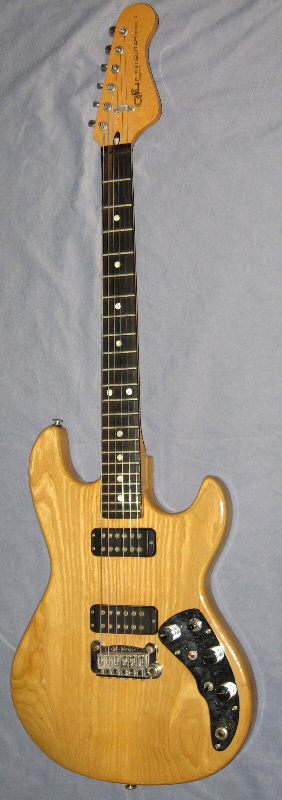
G&L S-500
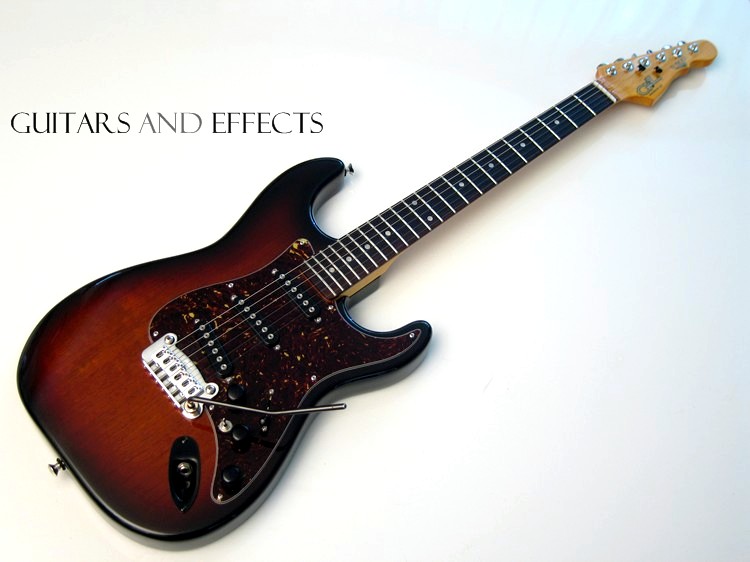
G&L ASAT

G&L Legacy (the last model Leo ever created)


Sunday, August 9, 2009
This is the Most Gorgeous Guitar I Have Ever Seen
A little about the company:
Nik-Huber-Guitars was founded by Nik Huber in 1996. Since then, the company grew slowly but constantly. Today a team of 5 highly skilled specialists is building around 120 instruments a year. All hand-crafted.
Since the first attendance at the Frankfurt Musik Messe in 1997, Nik Huber Guitars gained a worldwide reputation as a serious manufacturer of high-class electric-guitars.
In 1999 the expanding company moved to a commercial park in its hometown, Rodgau - 20 km south of Frankfurt/Germany, and resides now in a fully, state-of-the-art equipped workshop.



Friday, August 7, 2009
Marshall Introduces New Class 5 1x10 Combo Amp

Looking for that perfect bedroom amp? Well Marshall Amplification seems to have created it. The Class-5 is an all tube, 1x10" amp that keeps things stripped down and simple. Including only four controls (volume, treble, mids and bass), the Class-5 allows you to get sparklng cleans and also tune in that distinct Marshall British natural, tube overdrive.
This amps specs get even more juicy:
A single EL84 powers a 10" Celestion G10F-15, which Celestion specifically designed for this amp. According to Marshall and Celestion, this speaker gives the Class-5 a surprising amount of low-end for a tiny amp while still retaining its clarity. The amp even includes a headphone jack and 16 Ohm output, allowing it to power a 4x12 if you so desire. It also has Joe Bonamassa's seal of approval ta boot!
Check out a video demo here.

Basone Guitars: A Color-Changing, Laser-Loaded Guitar
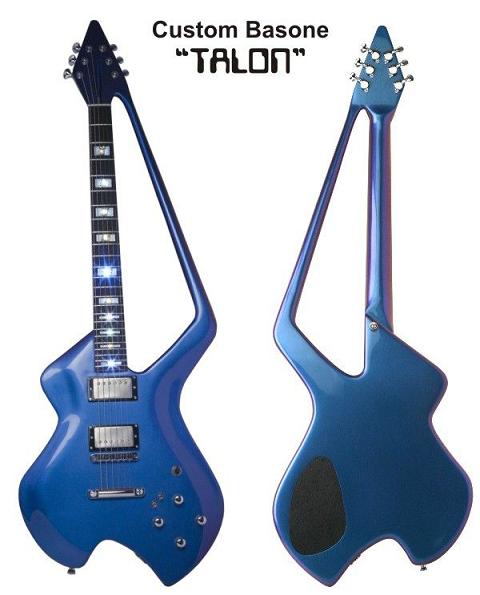
This strange design features a chambered Honduran Mahogany body with a carved maple top and a stability arm that connects the body to the headstock. This unique feature is said to give the guitar more resonance, thus improving sustain. Prince rocked one of these in the 80s. The finish is also painted on with a special kind of paint that shifts from a light, icy blue to cyan to gold, depending on the lighting.
Now this is where the Talon gets interesting...
This guitar has a 20 milli-watt, military-grade laser bored into the headstock! That's not all, its also got LEDs in the fretboard inlays that all have their own stitches to turn them on and off.
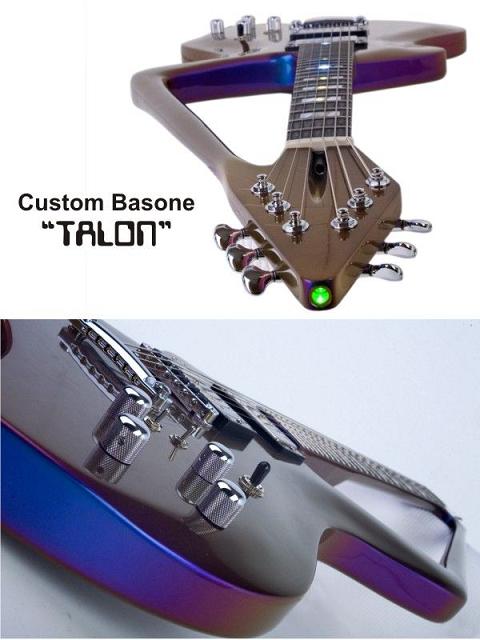
Anyways, Basone guitars are made in Vancouver, BC and their custom guitars start around $1800. Pricey, but cool.

Thursday, August 6, 2009
Now Blogging via. ScribeFire

Guitar Hero Getting More "Real?"

Recently, a company called Open Chord has released an electric guitar that can also be plugged into your Xbox or Wii and be used as a Guitar Hero/Rockband controller. When I first heard of this, I thought, "Oh cool!" That was the last time a positive thought crossed my mind.
After watching their "demo" video, it makes no sense. You have to plug the guitar into an amp and then into the system, so when you play random notes and chords in accordance with the game, it sounds like crap. I wonder if they realize that songs require more than just the first 5 frets to play.
Don't get me wrong, I love me some Guitar Hero. I don't see anything wrong with the game. If anything, it is inspiring kids to listen to rock n' roll again and maybe even take up the real guitar.
I was chatting with the owner of Advance Music here in Burlington, VT one day about Guitar Hero. He told me that since the game was released, he had seen more and more kids coming in with their parents to pick up a starter pack because of the game. Now to me, that sounds awesome. Any way we can get kids to listen to real music again is fine in my book.
I digress...
My point here is lets keep the game and the real thing separate. Its call well and good to try new innovations and whatnot, but a real guitar doesn't belong in a video game. If you want to learn the guitar, pick yourself up a nice Squier starter pack and check out some YouTube guitar lessons. They're extremely helpful.
Wednesday, August 5, 2009
How Many Guitars is Too Many?
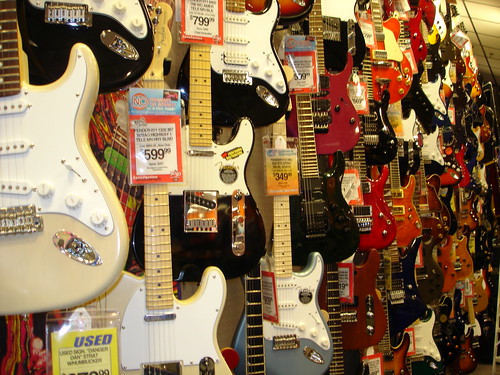
How many guitars do you have? One? Two? Seven? None?
Regardless of how many you may or may not have, how many is too many? Don't get me wrong, I do love my guitars (all five of them), but do I really need six different guitars? My answer: Of course.
Each one of my guitars does something, or produces sounds that the others cannot. For example: I have two strat-style guitars, but one has a humbucker in the bridge.
Single coil sounds? check.
Then I have a semi-hollow telecaster-style guitar loaded with two P90 soapbar pickups.
P90 and semi-hollow sounds? check.
Then there's the tried and true Les Paul.
Dual humbuckers? check.
Then of course, you have to have an acoustic.
Whats my point in all this blabbering about my gear? My point is that you only need enough guitars to be able to satisfy different tonal needs. Why would you need two Les Paul R8s in the same finish? (and yes, I've seen it) It just isn't necessary.
A fun little fact about a number of guitars: Over in the Harmony Central electric guitar forums, there is a thread attempting to count every guitar the users own. Right now the count is up to 4,562 and it gets bigger every day. That's a hell of a lot of guitars.
KuzTunes: Now Available in a New Flavor
PRS Releases New Model: the 305
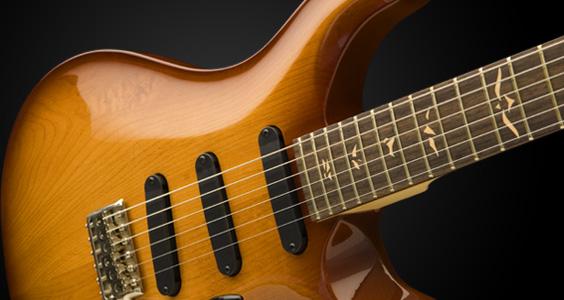 Wow. What a looker. I have always loved PRS guitars. The look and feel are just amazing. Their playability is unsurpassed in the industry. The only problem is that they just cost to damn much!
Wow. What a looker. I have always loved PRS guitars. The look and feel are just amazing. Their playability is unsurpassed in the industry. The only problem is that they just cost to damn much!The 305, based on the older 513, features three proprietary single coil pickups designed to produce that "classic sound." (i.e., a strat).Other features include: an alder body, maple neck, banded melon ‘513’ bird inlays and 25 ½” scale length. I personally can't get enough of those 513-style inlays.
Gotta get down to the store and check out one of these! Here's a full body shot for all you droolers out there. Check out the PRS website for a full gallery.

A History: The Les Paul Jr.
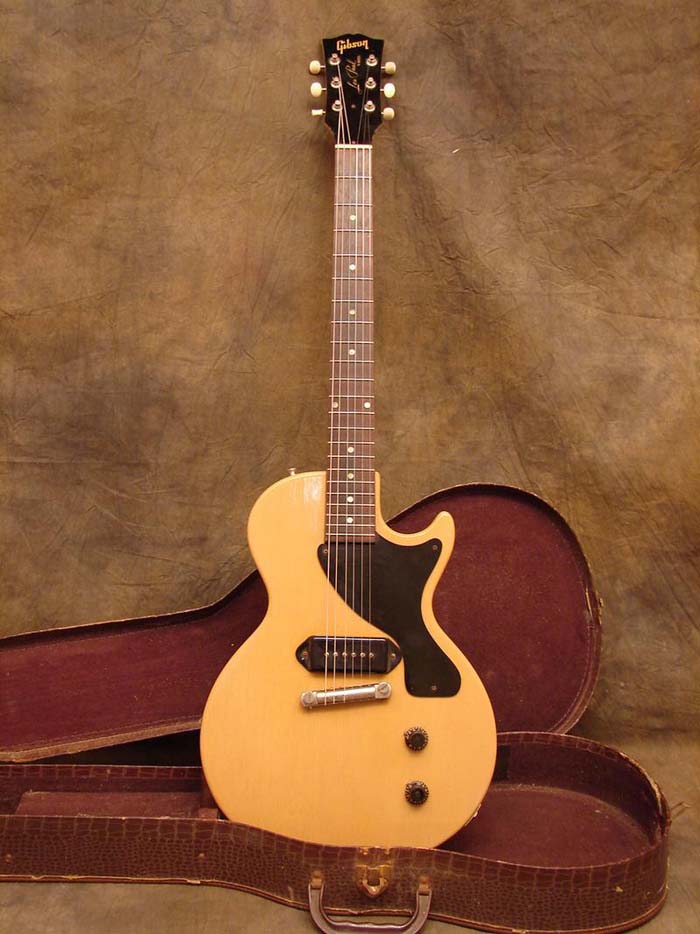
This is a new section I think I'll start to run. A "history of" section dedicated to looking into where certain guitars, amps, companies etc. find their roots.
For the first post, we'll look at the Gibson Les Paul Junior.
First introduced in 1954 as a cheaper alternative to the popular Les Paul model, the LP jr. sold for $99.00 and came in sunburst, TV yellow and cherry red. It featured a more cost effective aluminum wrap-around bridge, a slab of mahogany (without a maple cap like the Les Paul standard), and had one dog-ear P90 single coil pickup.
Over the years, the Les Paul Jr. some changes, including in 1956 when the bridge and pickup were repositioned to fix a problem of having the bridge lean too closely to the pickup.
In 1958, the Les Paul Jr. started to come with a double-cut design, instead of the classic single cut.
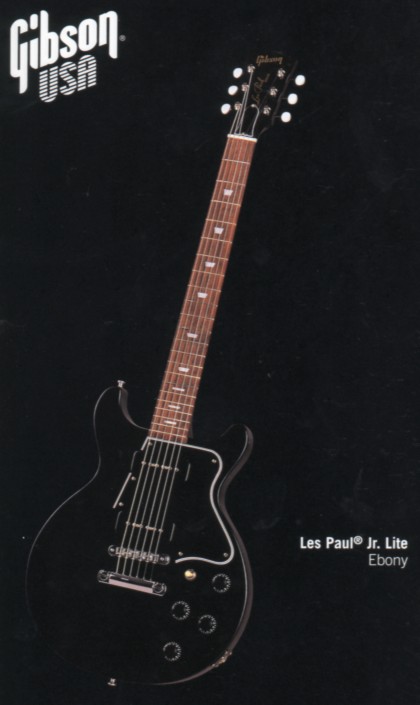
Then, in 1961, the Les Paul Jr. became the SG Junior.
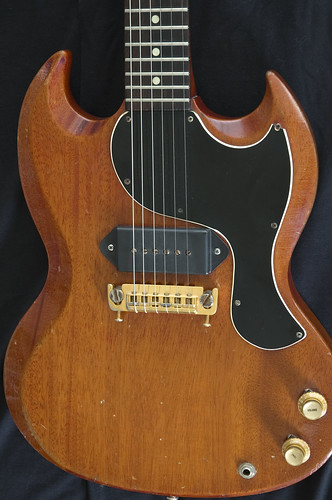
Production went on pretty much unhalted until 1992 when the model was discontinued. Following a fairly large cult following and appreciating collecting value, Gibson began making the LP Jr. again in 1998.
For more info, check out the article on Guitar Time.
Sunday, August 2, 2009
Hip-Hop group from the UK: The Howling
Check out this link, thanks to Needle in the Grove Records, for a FREE DOWNLOAD! of the album. I definitely suggest you guys check this out.
Saturday, August 1, 2009
RIAA Suing Student for $675,000!
To me, this is just absurd. There is no way that 30 songs can require damage reparations upwards of $20,000 each, from some kid who just wanted some music. Granted, he did do something illegal, but the punishment here doesn't seem to fit the crime. Clearly, this kid has to file for bankruptcy now. So what is the RIAA saying??
"If you take any music from us, we'll take all your money...well all of it we don't already have."
Its not like this kid was selling illegal copies of music at $1,000 a pop; he was just listening to them, as I'm sure most of you are listening to illegally downloaded music reading this right now.
It just makes no sense.
Friday, July 31, 2009
Summer NAMM Highlights
 Anyone who has ever tried the POG before knows what cool sounds you can get out of it. It can make your guitar sound like an organ if you want! But what's new about the POG2?
Anyone who has ever tried the POG before knows what cool sounds you can get out of it. It can make your guitar sound like an organ if you want! But what's new about the POG2? The POG2 will take you even higher. Use the new attack control to fade in lush, smooth swells. Tune in the new second sub-octave to reach deeper than ever before. The 2-pole resonant low-pass filter now includes two additional Q modes. Slide in the newly enhanced detune to further refine your sound.

Another new Gibson SG
The body of the Zoot Suit features a brand new body built with multiple birch wood laminate pieces (each one approximately .075” thick), each dyed with a different color then compressed and bonded together to form one solid block of wood. No paint is used. Each body is given two coats of satin nitrocellulose lacquer.
Hmm... birch wood laminate? Birch, to me, doesn't seem like it belongs on an electric guitar. I'd have to try that out before I can really formulate an opinion, but I do like the fact that all the wood is dyed, and no paint is used. It should let the wood "breathe" better, as the Lennon said.
Thursday, July 30, 2009
Road Worn Fender Review
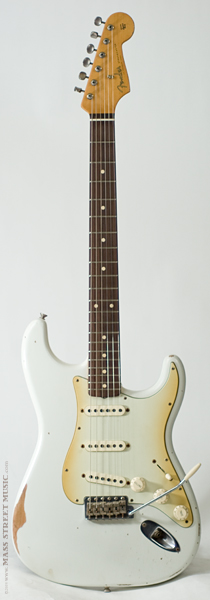
Have you noticed the trend of making new things look old? “Distressed” jeans and vintage clothing, furniture with purposefully places scratches and dings, buildings with old brick and cultivated ivy; for some reason, old is new.
This trend doesn’t only apply to the aforementioned products, but it can also be found in the guitar world. Recently, there has been a trend among “do-it-yourself” guitar luthiers to “relic” their guitars. Brand new guitars are taken right to the belt sander and distressed in certain areas, mostly the body and neck. They sand the paint off right down to the wooden core and complete it with scratches and dings, oxidized hardware and even faux cigarette burns on the headstock.
Playing off this DIY trend, Fender guitars has just released its “Road-Worn” series of guitars and basses. The line consists of a telecaster and Stratocaster guitar model and a precision and jazz bass models. While I am pretty skeptical about this “relic” trend, I needed to give it a try before I could fully form any opinions.
I walked into my local shop to find a huge display of Road-Worn Fenders staring right at me as soon as I walked in the door. I had to physically step around the display to even enter the store.
I picked up the relic’d black Stratocaster with a worn maple fret board that caught my eye. I was instantly surprised when I picked it up, but not in a good way. The price tag read “$995.00.” Then I looked at the headstock, near the serial number to see where it was manufactured. Fender has three versions of its instruments: ones manufactured in America, ones in Japan and ones in Mexico. The American-made Fenders are considered the best quality and run at a price tag of around $1,000. Japanese Fenders come in second, and Mexicans in last. Mexican Fenders have the reputation for being the economical option for someone who wants to buy a real Fender, and usually are priced no more than $450-$600.
This guitar was Mexican made. There was an additional $600-$400 just for them making my guitar look like it had been played for 30 years before I buy it.
Price aside, playability is what really matters in a guitar.
I sat down with the black strat and plugged it into a Twin Reverb re-issue; a classic Fender amp. When I began to play it, I was surprised again, but this time rather pleasantly.
Instantly. The neck felt like butter. Since all the lacquer was worn off, the bare wood provided for smooth, seamless movements up and down the fret board. A perfect balance between a thin telecaster-like neck and a chunky, 50s style neck, I am surprised to say that it was one of the best necks I have ever played. The worn down neck truly did make it seem like the guitar was “broken in.”
The electronics weren’t lacking either. Come to find out, the Road-Worn series comes loaded with American electronics and Fender’s Tex-Mex pickups, which provide a nice, quacky Stevie Ray Vaughn sound. This strat truly did feel and sound like it was from the 50s, like a real strat should.
The body itself was fine. Nothing really stood out. It had a fairly resonant body not the best I have played. It seemed to be a three or more piece body, which can kill the resonance and sustain a bit, but it wasn’t terrible. The worn paint at the armrest was nice. It didn’t feel sticky like many guitars can, but it also wasn’t really noticeable unless I thought about it. The pick guard and rest of the white plastic was yellowed to look older, and the hardware all had faux rust on it. It was a little weird to look at, but it didn’t affect the playability at all.
After a while of playing, I realized that Fender had just about sold me on their new series. While I still don’t like this new trend of old, no one can argue that the guitars don’t play well. If Fender would lower their price to the range of $700-$750, they would sell many more of these. I feel like the only thing holding these back right now is the price. So, check one out, and if you have a grand you want to spend, this isn’t a bad place to drop it... although there are better places.
Wednesday, July 29, 2009
Dave Grolh, Josh Homme and John Paul Jones Supergroup

You read that right, Dave Grohl, Josh Homme and John Paul Jones are right now, as I type this, recording a new album in LA. There have been rumors of this union since about 2005 when Grolh said that his next side project would include him working on drums, and you guessed it: thats what he's doing.
Tuesday, July 28, 2009
Sunday, July 26, 2009
Top 5 tips for buying a new guitar

Tone is in the.... concrete?!
Saturday, July 25, 2009
Learn something new every day
 That is a 1959 Gibson Les Paul Jr., and THAT is what guitars are all about. See how the yellow color is somewhat greenish? That is a result of the yellow dye chemically reacting with the mahogany body of the guitar. If the same yellow dye were to be up on a guitar of, say, alder, it would come out as a flat, plain yellow.
That is a 1959 Gibson Les Paul Jr., and THAT is what guitars are all about. See how the yellow color is somewhat greenish? That is a result of the yellow dye chemically reacting with the mahogany body of the guitar. If the same yellow dye were to be up on a guitar of, say, alder, it would come out as a flat, plain yellow. From Wiki:
Later, in 1955, Gibson launched the Les Paul TV model[10], which was essentially a Junior with what Gibson called a natural finish. This finish was actually more of a translucent mustard yellow through which the wood grain could be seen, and was not unlike the finish that competitor Fender called butterscotch yellow. The idea behind this TV Yellow was that white guitars would glare too much on early black and white television broadcasts, whereas TV Yellow guitars would not cast a glare.[11]

















